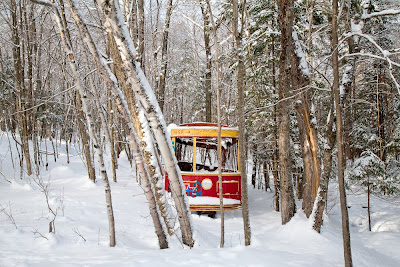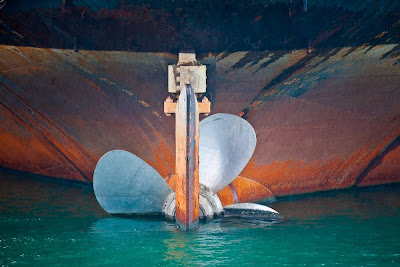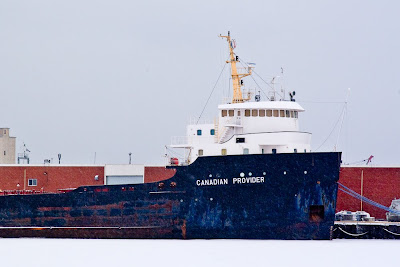Magic realism is a style of artistic expression that exhibits traits like photo-realistic detail, the merging of the fantastic with the ordinary and the depiction of the ordinary in great detail so that the emotion under the surface is exposed. Here's a very nice website that describes magic realism in more detail with lots of nice examples.
I've been fortunate to have visited many of the great galleries of the world and have gained a deep appreciation of many artists and painting schools, but I still would love to have a Colville or a Danby original hanging on my wall more than anything else.
So, you might ask, what has this got to do with photography? Isn't photography by its very nature realism? Well, realism is not magic realism and I think you can create art that can be called magic realism with a camera and Photoshop. Here's one example:
.jpg) This image, entitled "Last stop, everyone off", was taken in December and achieves the kind of magic realist look that I've recently been striving for. The subject is surreal -- what's an old trolley car doing in the middle of the woods? The woods themselves are captured in super detail. I've used a small aperture to get a large, unnatural depth of field so that the trees in the foreground and the trees in the background are sharp. I've also used the sharpening tools in Photoshop to crisp the image up just a little beyond reality. The saturation and local contrast have been adjusted to go just a little bit over the edge as well so that the image will not be mistaken for a photograph. The overall mood of the photo is just a little sad. What is the story of the trolley car? Why did it get abandoned in the deep woods?
This image, entitled "Last stop, everyone off", was taken in December and achieves the kind of magic realist look that I've recently been striving for. The subject is surreal -- what's an old trolley car doing in the middle of the woods? The woods themselves are captured in super detail. I've used a small aperture to get a large, unnatural depth of field so that the trees in the foreground and the trees in the background are sharp. I've also used the sharpening tools in Photoshop to crisp the image up just a little beyond reality. The saturation and local contrast have been adjusted to go just a little bit over the edge as well so that the image will not be mistaken for a photograph. The overall mood of the photo is just a little sad. What is the story of the trolley car? Why did it get abandoned in the deep woods?Here's another image that comes close to what I'm trying to achieve...

The title of the image is "Sunrise, Sunny Lake" and it has several qualities of magic realism that I quite like. Again, I've used local contrast enhancement and saturation to make it look more like a painting and less like a photo. The sharpening was also taken up a subtle notch to emphasize the lines of the paddle boat. This time, instead of choosing a subject that was unexpected and out of context, the focus of the image is a mundane paddle boat. The use of rather commonplace subject focuses the viewer on the mood of the piece and the meaning that lies beyond the objects in the image. We see the potential of the day - the sun coming up, the paddle boat waiting for the children to use it and we also see the tranquility and beauty of the surroundings knowing that most people are in bed and not around to witness the subtle colours in the water and the shadows of the shore.
It's sometimes difficult to explain to viewers why your work is clearly not photographic in nature even though it comes from a digital camera. The purists among us would be critical of the over-saturation and over-sharpening. In fact, one person recently suggested that I take some Photoshop lessons because I clearly didn't understand how to hold back on the saturation slider not realizing that I'd fully intended to create a work that was meant to transcend photography. The purist would argue that photographs are supposed to come out of the camera fully hatched and perfect.
For the benefit of the purists, I recommend this video on Ansel Adams, probably the most famous landscape photographer who ever lived. Be sure to pay attention when Ansel's son shows the difference between the negative of one of Adams' most famous images and the actual print. The sky has been darkened from a mid-gray to black in order to emphasize the contrast between the sky and the land below.
As Ansel was fond of saying, the negative is the musical score and the print is the performance. This is especially true in the digital age. The digital negative (i.e. the file produced by the camera) is a flat, fuzzy thing that is just the raw material. Photoshop and Lightroom are the tools of the artist to create an expression that reflects what the artist saw through the lens with his heart.
.jpg)
.jpg)
.jpg)